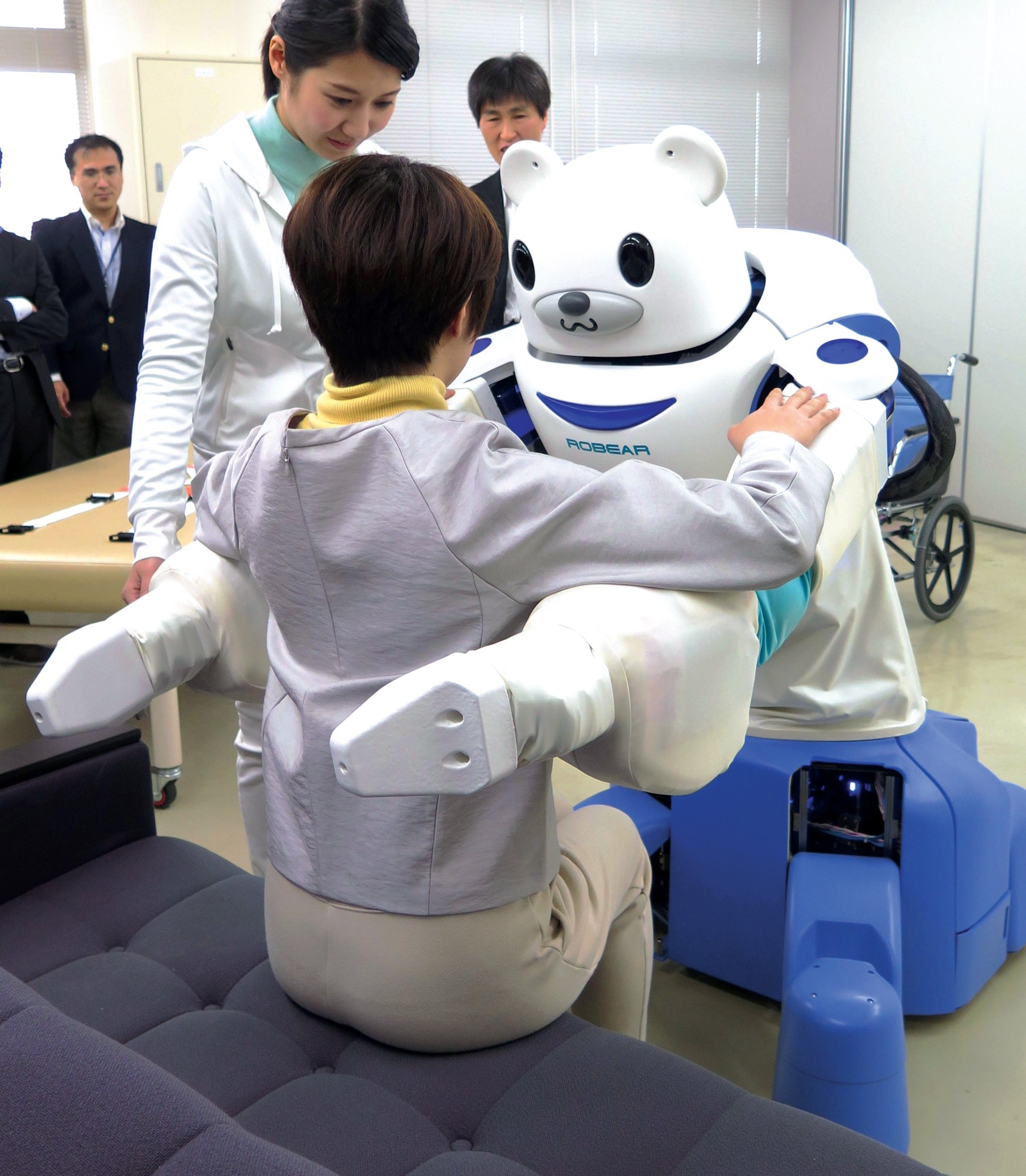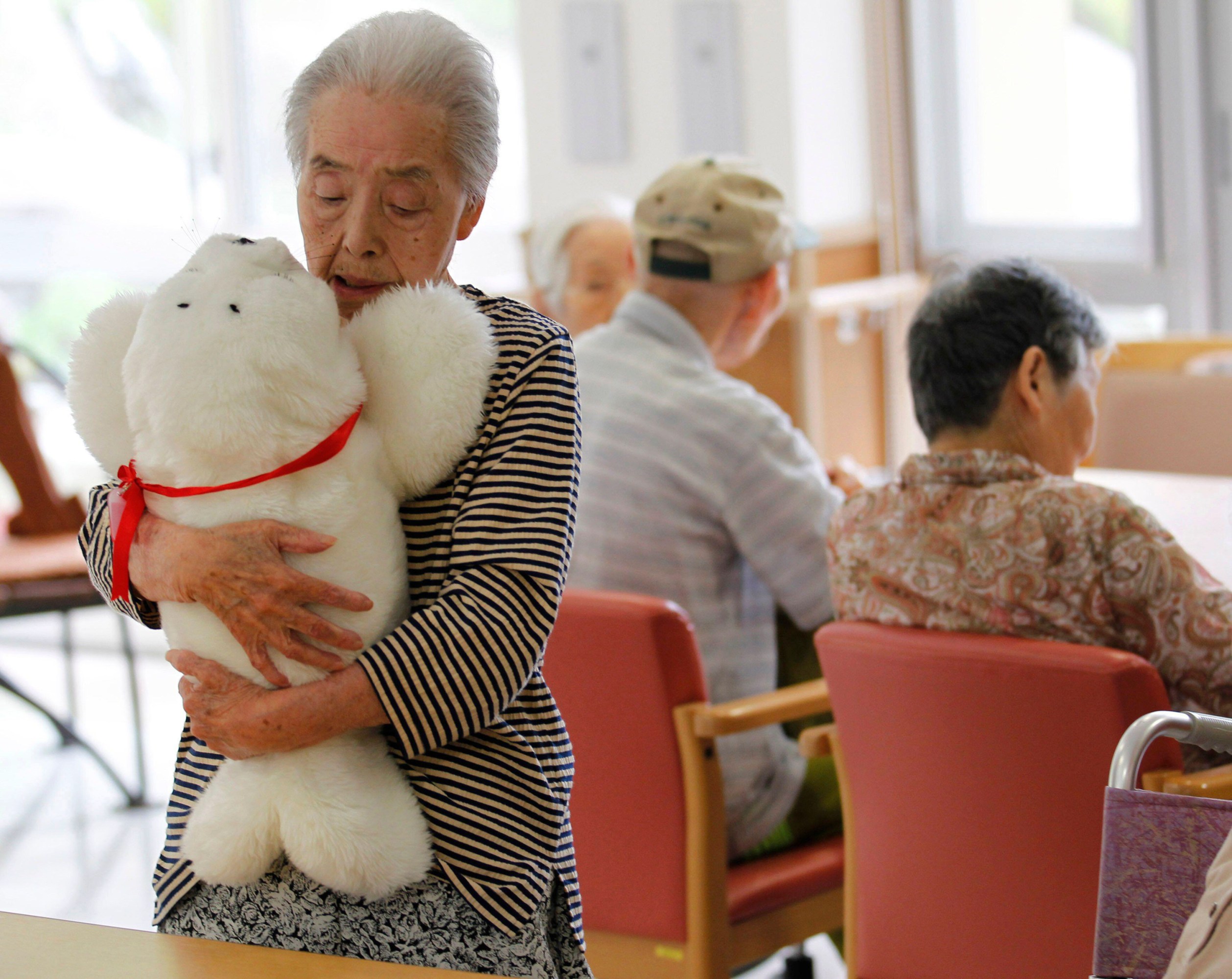Japan has been developing robots to care for older people for over two decades, with public and private investment accelerating markedly in the 2010s. By 2018, the national government alone had spent well in excess of $300 million funding research and development for such devices. At first glance, the reason for racing to roboticize care may seem obvious. Almost any news article, presentation, or academic paper on the subject is prefaced by an array of anxiety-inducing facts and figures about Japan’s aging population: birth rates are below replacement levels, the population has started to shrink, and though in 2000 there were about four working-age adults for every person over 65, by 2050 the two groups will be near parity. The number of older people requiring care is increasing rapidly, as is the cost of caring for them. At the same time, the already large shortage of care workers is expected to get much worse over the next decade. There’s little doubt that many people in Japan see robots as a way to fill in for these missing workers without paying higher wages or confronting difficult questions about importing cheap immigrant labor, which successive conservative Japanese governments have tried to curtail.
Care robots come in various shapes and sizes. Some are meant for physical care, including machines that can help lift older people if they’re unable to get up by themselves; assist with mobility and exercise; monitor their physical activity and detect falls; feed them; and help them take a bath or use the toilet. Others are aimed at engaging older people socially and emotionally in order to manage, reduce, and even prevent cognitive decline; they might also provide companionship and therapy for lonely older people, make those with dementia-related conditions easier for care staff to manage, and reduce the number of caregivers required for day-to-day care. These robots tend to be expensive to buy or lease, and so far most have been marketed toward residential care facilities.
A growing body of evidence is finding that robots tend to end up creating more work for caregivers.
In Japan, robots are often assumed to be a natural solution to the “problem” of elder care. The country has extensive expertise in industrial robotics and led the world for decades in humanoid-robot research. At the same time, many Japanese people seem—on the surface, at least—to welcome the idea of interacting with robots in everyday life. Commentators often point to supposed religious and cultural explanations for this apparent affinity—specifically, an animist worldview that encourages people to view robots as having some kind of spirit of their own, and the huge popularity of robot characters in manga and animation. Robotics companies and supportive policy makers have promoted the idea that care robots will relieve the burden on human care workers and become a major new export industry for Japanese manufacturers. The title of not one but two books (published in 2006 and 2011 and written by Nakayama Shin and Kishi Nobuhito, respectively) sums up this belief: Robots Will Save Japan.

The reality, of course, is more complex, and the popularity of robots among Japanese people relies in large part on decades of relentless promotion by state, media, and industry. Accepting the idea of robots is one thing; being willing to interact with them in real life is quite another. What’s more, their real-life abilities trail far behind the expectations shaped by their hyped-up image. It’s something of an inconvenient truth for the robot enthusiasts that despite the publicity, government support, and subsidies—and the real technological achievements of engineers and programmers—robots don’t really feature in any major aspect of most people’s daily lives in Japan, including elder care.
A major national survey of over 9,000 elder-care institutions in Japan showed that in 2019, only about 10% reported having introduced any care robot, while a 2021 study found that out of a sample of 444 people who provided home care, only 2% had experience with a care robot. There is some evidence to suggest that when robots are purchased, they often end up being used for only a short time before being locked away in a cupboard.
My research has focused on this disconnect between the promise of care robots and their actual introduction and use. Since 2016, I have spent more than 18 months conducting ethnographic fieldwork in Japan, including spending time at a nursing care home that was trialing three of them: Hug, a lifting robot; Paro, a robotic seal; and Pepper, a humanoid robot. Hug was meant to prevent care workers from having to manually lift residents, Paro to offer a robotic form of animal therapy (while also acting as a distraction aid for some people with dementia who made repeated demands of staff throughout the day), and Pepper to run recreational exercise sessions so that staff would be freed for other duties.

KIM KYUNG HOON/REUTERS/ALAMY
But problems quickly became apparent. Staff stopped using Hug after only a few days, saying it was cumbersome and time consuming to wheel from room to room—cutting into the time they had to interact with the residents. And only a small number of them could be lifted comfortably using the machine.
Paro was received more favorably by staff and residents alike. Shaped like a fluffy, soft toy seal, it can make noises, move its head, and wiggle its tail when users pet and talk to it. At first, care workers were quite happy with the robot. However, difficulties soon emerged. One resident kept trying to “skin” Paro by removing its outer layer of synthetic fur, while another developed a very close attachment, refusing to eat meals or go to bed without having it by her side. Staff ended up having to keep a close eye on Paro’s interactions with residents, and it didn’t seem to reduce the repetitive behavior patterns of those with severe dementia.




